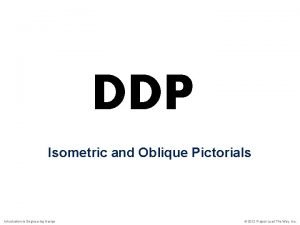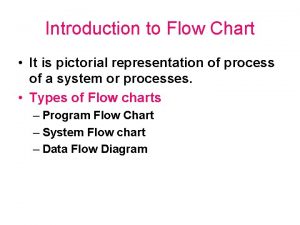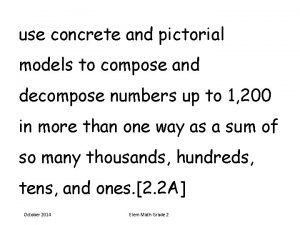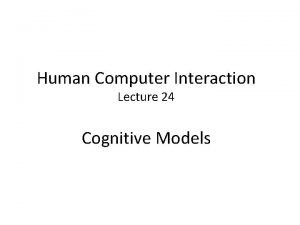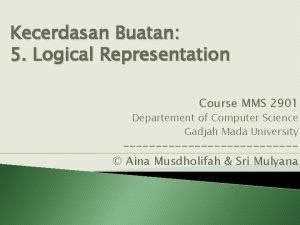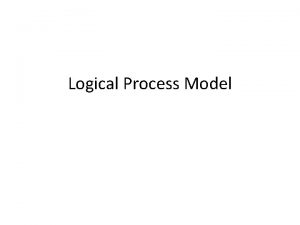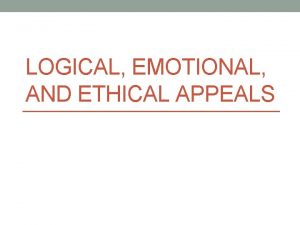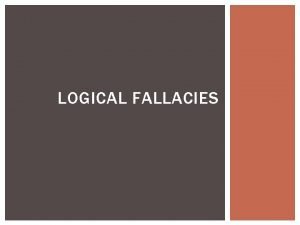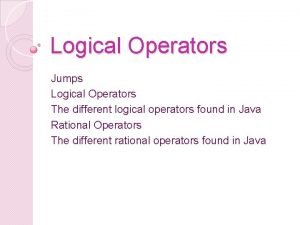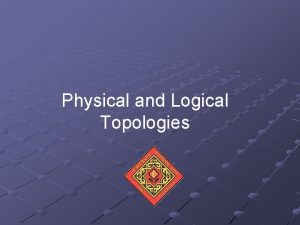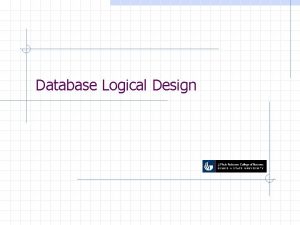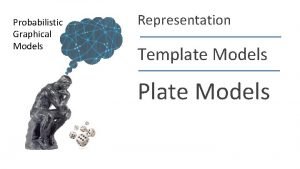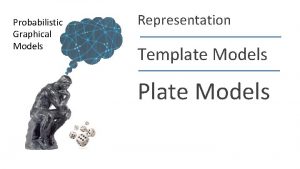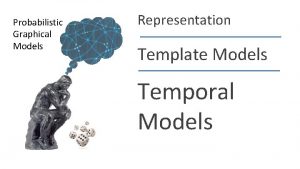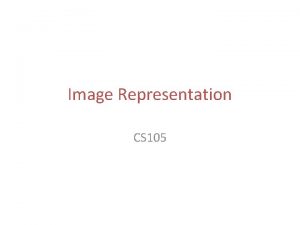Models Logical and Physical Model a pictorial representation













- Slides: 13

Models: Logical and Physical Model – a pictorial representation of reality. Just as a picture is worth a thousand words, most models are pictorial representations of reality. Logical model – a nontechnical pictorial representation that depicts what a system is or does. Synonyms or essential model, conceptual model, and business model. 1 Physical model – a technical pictorial representation that depicts what a system is or does and how the system is implemented. Synonyms are implementation model and technical model.

Differences Between DFDs and Flowcharts • Processes on DFDs can operate in parallel (atthe-same-time) • Processes on flowcharts execute one at a time • DFDs show the flow of data through a system • Flowcharts show the flow of control (sequence and transfer of control) • Processes on a DFD can have dramatically different timing (daily, weekly, on demand) • Processes on flowcharts are part of a single program with consistent timing 2

Types of Logical Processes Function – a set of related and ongoing activities of a business. • A function has no start or end. Event – a logical unit of work that must be completed as a whole. Sometimes called a transaction. • Triggered by a discrete input and is completed when process has responded with appropriate outputs. • Functions consist of processes that respond to events. Elementary process – a discrete, detailed activity or task required to complete the response to an event. Also called a primitive process. • The lowest level of detail depicted in a process model. 3

When to Draw Process Models • Strategic systems planning • Enterprise process models illustrate important business functions. • Business process redesign • “As is” process models facilitate critical analysis. • “To be” process models facilitate improvement. • Systems analysis (primary focus of this course) 4 • • Model existing system including its limitations Model target system’s logical requirements Model candidate technical solutions Model the target technical solution

Modern Structured Analysis (More Commonly Practiced) 1. Draw context DFD to establish initial project scope. 2. Draw functional decomposition diagram to partition the system into subsystems. 3. Create event-response or use-case list for the system to define events for which the system must have a response. 4. Draw an event DFD (or event handler) for each event. 5. Merge event DFDs into a system diagram (or, for larger systems, subsystem diagrams). 6. Draw detailed, primitive DFDs for the more complex event handlers. 7. Document data flows and processes in data dictionary. 5

Structured Analysis Diagram Progression (1 of 3) 6

Sound. Stage Context DFD 7

Sound. Stage Functional Decomposition Diagram 8 • Break system into sub-components to reveal more detail. • Every process to be factored should be factored into at least two child processes. • Larger systems might be factored into subsystems and functions.

Structured Analysis Diagram Progression (2 of 3) 9

Sound. Stage Partial Use Case List Actor/ External Agent Marketing (time) Member 10 Event (or Use Case) Establishes a new membership subscription plan to entice new members. Establishes a new membership resubscription plan to lure back former members. A subscription plan expires. Joins club by subscribing. Trigger Response New Member Generate Subscription Plan Confirmation. Program Create Agreement in the database. Past Member Generate Subscription Resubscripti Plan Confirmation. on Program Create Agreement in the database. (current date) Generate Agreement Change Confirmation. Logically delete Agreement in database. New Generate Member Subscription Directory Update Confirmation. Create Member in database. Create first Member

Sound. Stage Partial Event Decomposition Diagram 11

Event Diagram (more complex) 12

Structured Analysis Diagram Progression (3 of 3) 13
 What is a pictorial model
What is a pictorial model Isometric pictorial vs oblique pictorial
Isometric pictorial vs oblique pictorial Flow chart is a pictorial representation of
Flow chart is a pictorial representation of Concrete and pictorial models
Concrete and pictorial models P q logical equivalence
P q logical equivalence Logical form and logical equivalence
Logical form and logical equivalence What is bnf in hci
What is bnf in hci Staar blank place value chart
Staar blank place value chart Blank graphic organizers for staar
Blank graphic organizers for staar Pictorial models of geometric figures with no labels
Pictorial models of geometric figures with no labels Contoh deduksi
Contoh deduksi Modals and semimodals
Modals and semimodals Logical processing model
Logical processing model Bookstore database design
Bookstore database design

